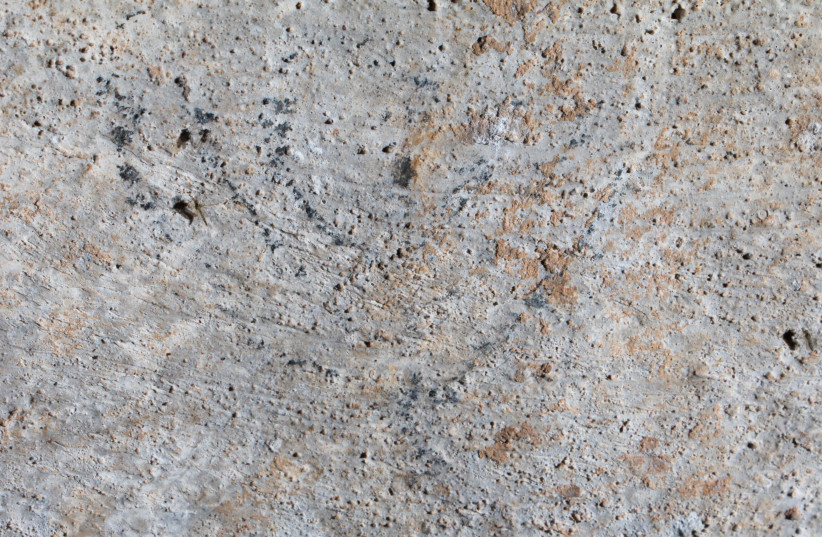 Rare menorah engraving dates back to Hasmonean era
Rare menorah engraving dates back to Hasmonean era
HANNAH BROWN
The menorah was discovered in the 1980s in Judea and Samaria.

A rare graffito of a seven-branched menorah found many years ago at the entrance to a tomb on the outskirts of the Arab village of Mukhmas, northeast of Jerusalem, has been highlighted by Dr. Dvir Raviv of Bar-Ilan University’s Martin (Szusz) Department of Land of Israel Studies and Archaeology, in a paper published in the archaeology and history journal In the Highland’s Depth, released just in time for Hanukkah.
The menorah was discovered in the 1980s during a survey initiated by the Staff Office for Archaeology in Judea and Samaria, and was archived more than 30 years ago.
Dr. Raviv reported that the menorah engraving found in Mukhmas dates back to the period between the Hasmonean era and the Bar-Kokhba revolt and is considered an unusual find, because decorative use of the Temple menorah was rare during this period. The most prominent examples found to date include depictions of a menorah on coins of the Hasmonean ruler Mattathias Antigonus, on objects and remnants from Jerusalem, on a stone table in Magdala north of Tiberias and on the Arch of Titus in Rome.
The Mukhmas engraving resembles paintings of two seven-branched menorahs documented in the al-‘Aliliyat caves, a group of caves nearby that served as a hiding place and refuge during the Second Temple period and the days of the Jewish revolts against Rome.
Drawing of the menorah. (Credit: Staff, Office for Archaeology in Judea and Samaria)
The use of a menorah to decorate the façades of Jewish tombs was quite common in ancient times, but this is only the second time that one has been discovered on a Jewish tomb from the period preceding the Bar-Kokhba revolt. A long-known example is Jason’s Tomb in Jerusalem from the Hasmonean period, with small, schematic carvings on the walls of the entrance vestibule, unlike the large, decorated menorah discovered on the façade of the Mukhmas tomb.
Due to the rare use of the menorah as an artistic decoration from the Second Temple period until the Bar-Kokhba revolt, and based on the contexts in which the menorahs of this period were discovered, it has been suggested that the menorah may have been a motif related to the Temple and the priests that served in it during this time.
The depictions of menorahs found on the outskirts of Mukhmas – and the mention of Mikhmas (currently the village of Mukhmas) in the Mishnah as the place from which selected semolina wheat was brought to the Temple (Mishnah Menahot 8:1) – may indicate that a priestly population lived there during the Second Temple period.
Additionally, Mikhmas is mentioned as the dwelling place of Jonathan the Hasmonean, where he began to establish his status in Judea after the death of his brother Judah Maccabee (1 Maccabees 9:73).
“Jonathan’s choice of the town as the base from which to consolidate his control of Judea may have been linked to the location of Mikhmas in a densely-populated area of Jews who supported the Hasmoneans during the years of the revolt,” said Raviv.
“Due to the difficulty in determining the exact date of the menorah’s graffito and the scarcity of explicit references to priests in Mikhmas during the Second Temple period, it is possible that a group reached the site only after the destruction of the Temple and lived there during the period between the revolts,” he said.
Zawartość publikowanych artykułów i materiałów nie reprezentuje poglądów ani opinii Reunion’68,
ani też webmastera Blogu Reunion’68, chyba ze jest to wyraźnie zaznaczone.
Twoje uwagi, linki, własne artykuły lub wiadomości prześlij na adres:
webmaster@reunion68.com
